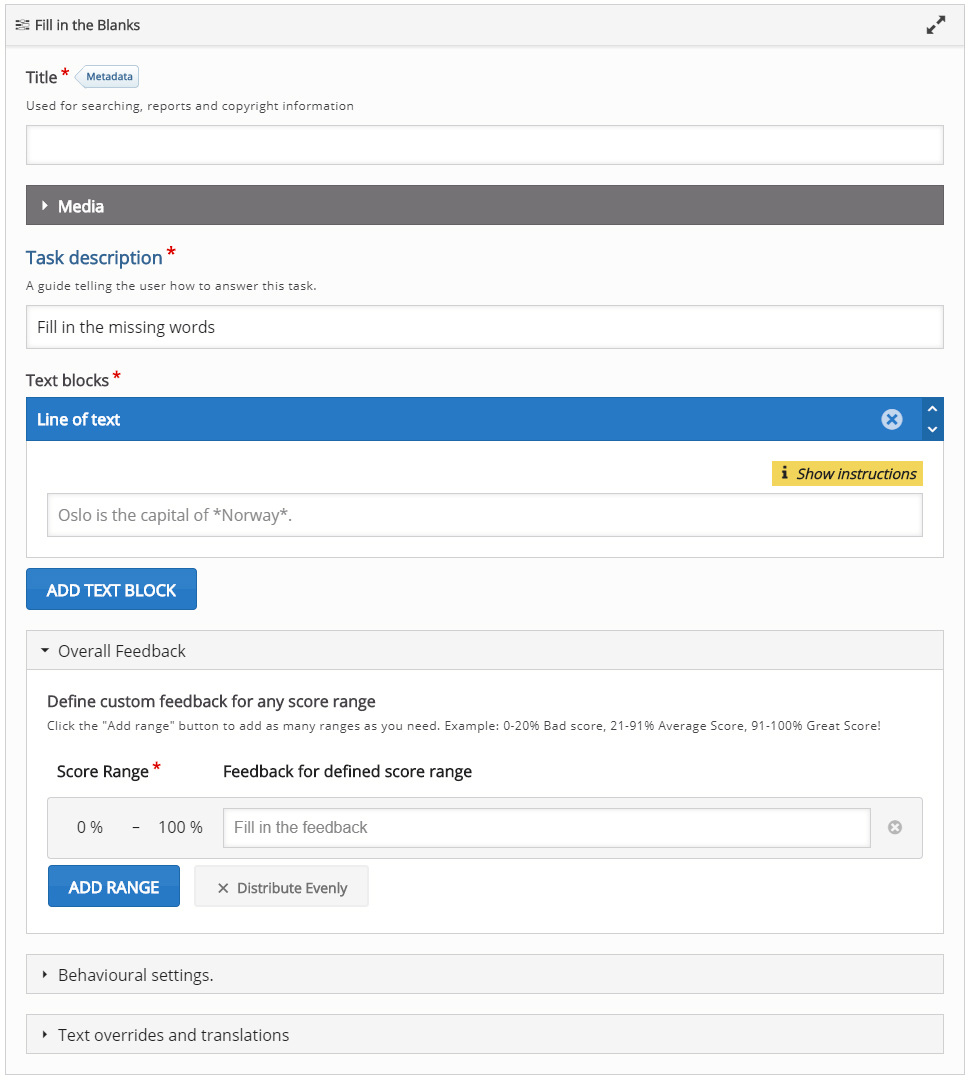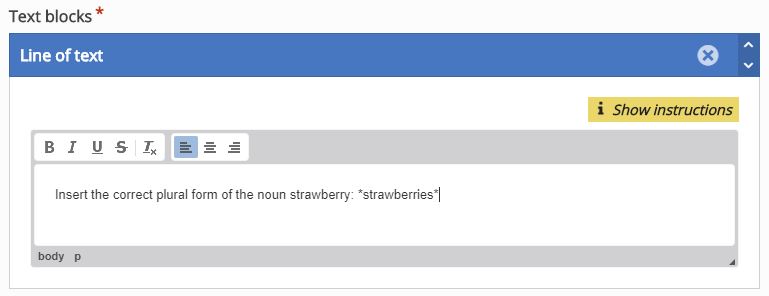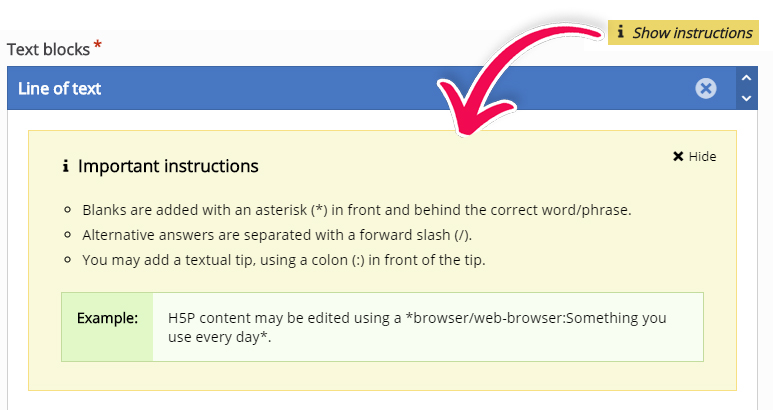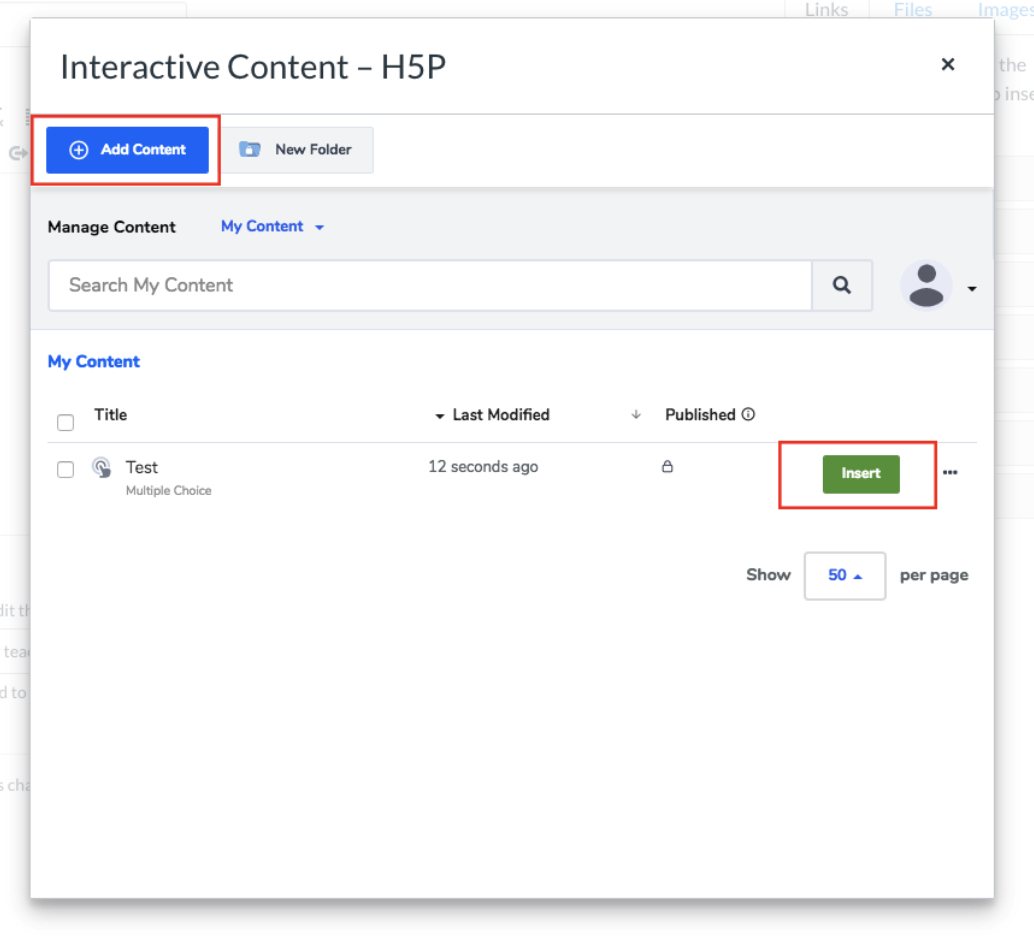How to create Fill in the blanks
The Fill in the blanks allows eLearning designers to create cloze tests. Portions of words or sentences are removed from a text and the learner is asked to replace the missing text.
Accessing H5P in Canvas
You can access H5P in Canvas through the Rich Content Editor (RCE), which is accessible via the edit view of Page, Assignment, Discussion Board, Announcement and Quiz questions.
For this example, we will be adding H5P onto a Canvas page. The first thing you will need to do is either open the page you want to embed the H5P content into or create a new page. Then click the ‘Edit’ button which will open the RCE. (You will automatically go into edit mode if you create a new page.)
Next, you will need to locate H5P in the RCE toolbar highlighted in red below.
Clicking on that menu item will open a pop-up showing your H5P library. From here, you will have the option to either insert previously created content or create something new.
A search bar will appear. Type in Fill in the blanks and select this option from the options generated below the search bar.

The Fill in the Blanks editor will then appear
Fill in the blanks editor
The Fill in the blanks question editor should now appear. The editor looks like this:

The Fill in the blanks editor consists of
1. Title
2. Task description
3. Text blocks.
Title
Add a title. This will not be visible to your learners but can be used for searching, reports and copyright information.
Task description
In the Task description field, give the learner basic instructions or introduce the problem to be solved.

Text blocks
Under Text blocks, choose Add Text Block .
Each text block is referred to as a line of text.
For this example we will add three lines of text and define which words are to be removed for the learner to identify.
You can remove multiple words in each line of text.
By default, only a single Text block is displayed when you create a new Fill in the blanks.
How to identify the missing words
To remove a word insert asterisks (*) before and after the word like this:
Insert the correct plural form of the noun strawberry: *strawberries*

In the screenshot below we have examples of three lines of text
Example 1. We have used asteriks (*) before and after the word strawberries
Example 2. We have used asteriks (*) before and after the word red
Example 3. We have used asteriks (*) before and after 6/six and a / between 6 and Six.
This allows the learner to insert both the number 6 as well as the word six, so either answer is correct.
We can define alternative answers by using a slash to separate the accepted alternative answers inside the asterisks.
Example 1, 2 and 3 can be seen here

Add as many Text blocks as you want.
Remove Text blocks by pressing the  button in the top right corner of the Text block.
button in the top right corner of the Text block. You change the order of the Text blocks by pulling the  button in the top left corner of the Text block.
button in the top left corner of the Text block.
If you need instructions on how to create content you can press the "Show instructions" button at any time and the instructions block will open. It looks like so:

Behavioural Settings
Retry
In the behavioural settings you can choose to allow the learner to try the Fill in the blanks multiple times
Check the Enable "Retry" button checkbox highlighted in red below.
Case Sensitive
Decide whether you want the learner to provide the exact same answer or whether they can provide their answer in lower or upper case.
Check or uncheck the Case sensitive checkbox as appropriate.
Finishing up
Save and Insert to view your finished Fill in the blanks.





